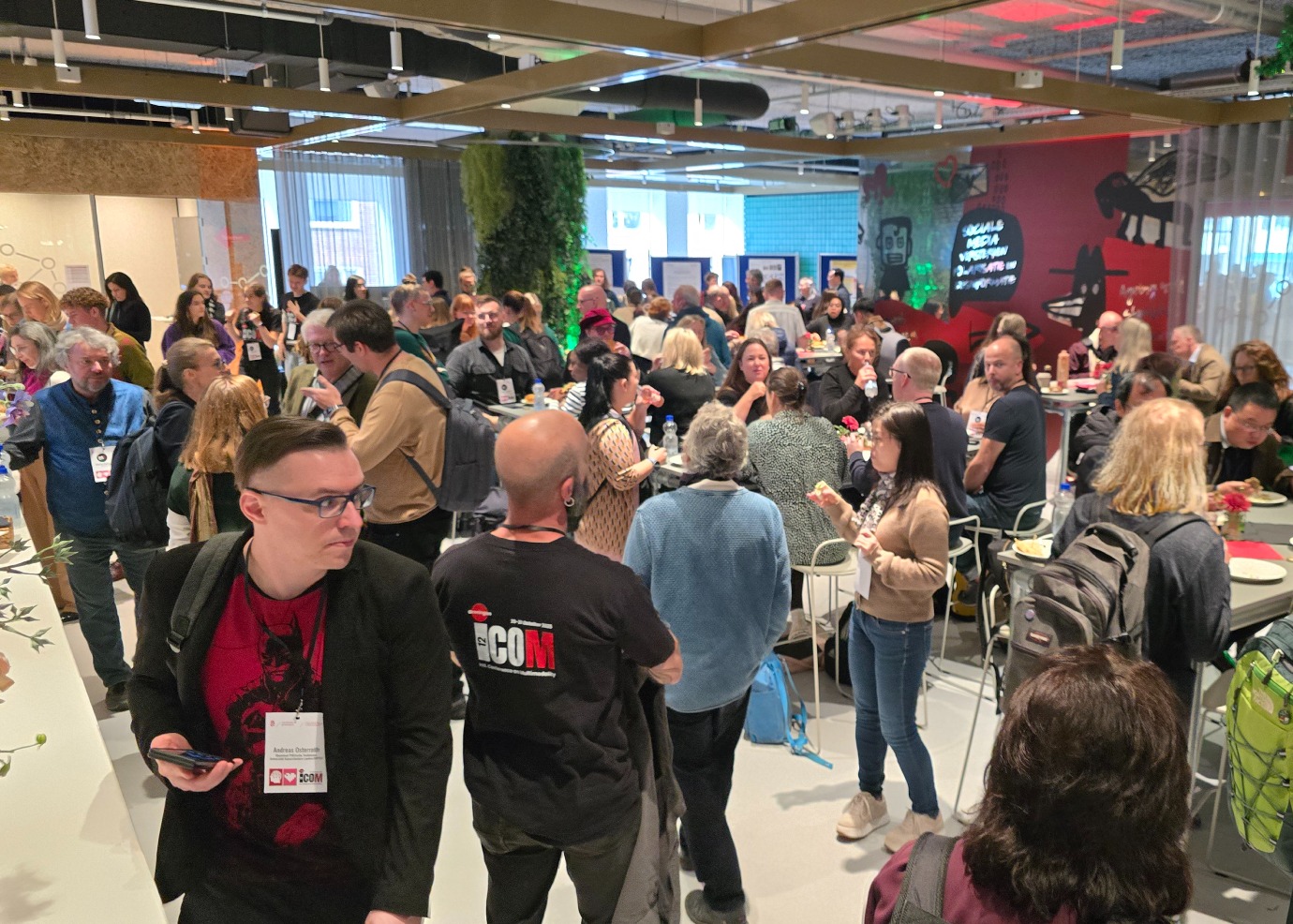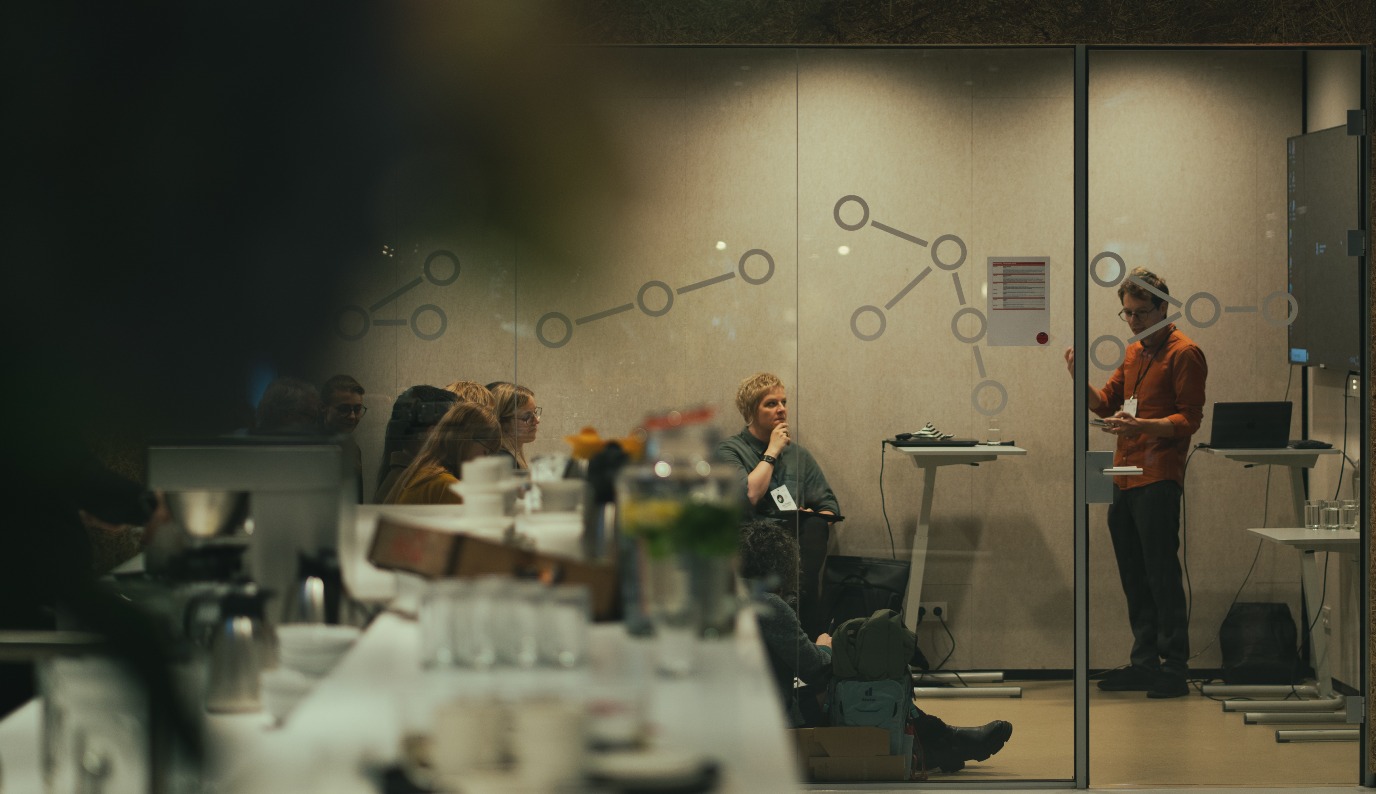‘We wanted to spark conversations’

Interaction was the focus of the 12th edition of the International Conference on Multimodality. The event took place from October 29 to 31 at the House of Connections in Groningen. Organizers and UG researchers Janina Wildfeuer and Francesco Possemato look back. ‘Above all, the conference was about making new connections.’
The International Conference on Multimodality (ICOM) is a biennial conference where researchers from various disciplines come together. What unites them is research on multimodality. This broad field focuses on the interaction between verbal and non-verbal expressions, such as images, videos, gestures, and facial expressions, explains Wildfeuer.
Multimodality is studied from a wide range of disciplines. At the conference, there were researchers from linguistics, communication studies, psychology, and many other fields of the humanities, as well as those with a more technical background. Artificial intelligence (AI) also played a major role in this edition. ‘A lot of research has been done on language, but we still know relatively little about other expressive forms used in communication. Ultimately, all research on multimodality is about a form of meaning-making.’
More than 200 researchers from 33 different countries came together during the conference. Bringing together different disciplines was an important goal of the event, notes Possemato. ‘These researchers from classic disciplines normally do not come into contact with each other. This time they did, and without any major fights,’ he adds, with a smile. Wildfeuer: ‘People shared the same interest in multimodality, but they wanted to broaden their perspective.’



The structure of the event was well received by the participants. Unlike the usual practice of starting with plenary keynotes, the conference began with interactive workshops where participants immediately engaged in conversation with one another. ‘We wanted to spark conversations from the very beginning. After that, it was difficult to capture everyone’s attention during the breaks because people were busy talking. The House of Connections was also a great location for this: the open layout of the rooms encouraged interaction.’
During the conference, participants could choose from a variety of sessions, each approaching multimodality from different perspectives. There were also four keynotes featuring prominent figures from the fields. The conference ended with a roundtable discussion on the future of the discipline. ‘We had some very lively discussions,’ says Possemato. ‘You could see the different ‘souls’ of the various disciplines.’
An important goal of the conference was to share knowledge about multimodality research among a broad group of researchers. In addition, it was about initiating conversations between different scholars from different disciplines, says Possemato. ‘In the future, we would like to continue that conversation. We definitely want to maintain the momentum.’
The Jantina Tammes School of Digital Society, Technology & Artificial Intelligence was involved in the organization of the conference. You can read more about the event on this website.
More news
-
15 September 2025
Successful visit to the UG by Rector of Institut Teknologi Bandung

